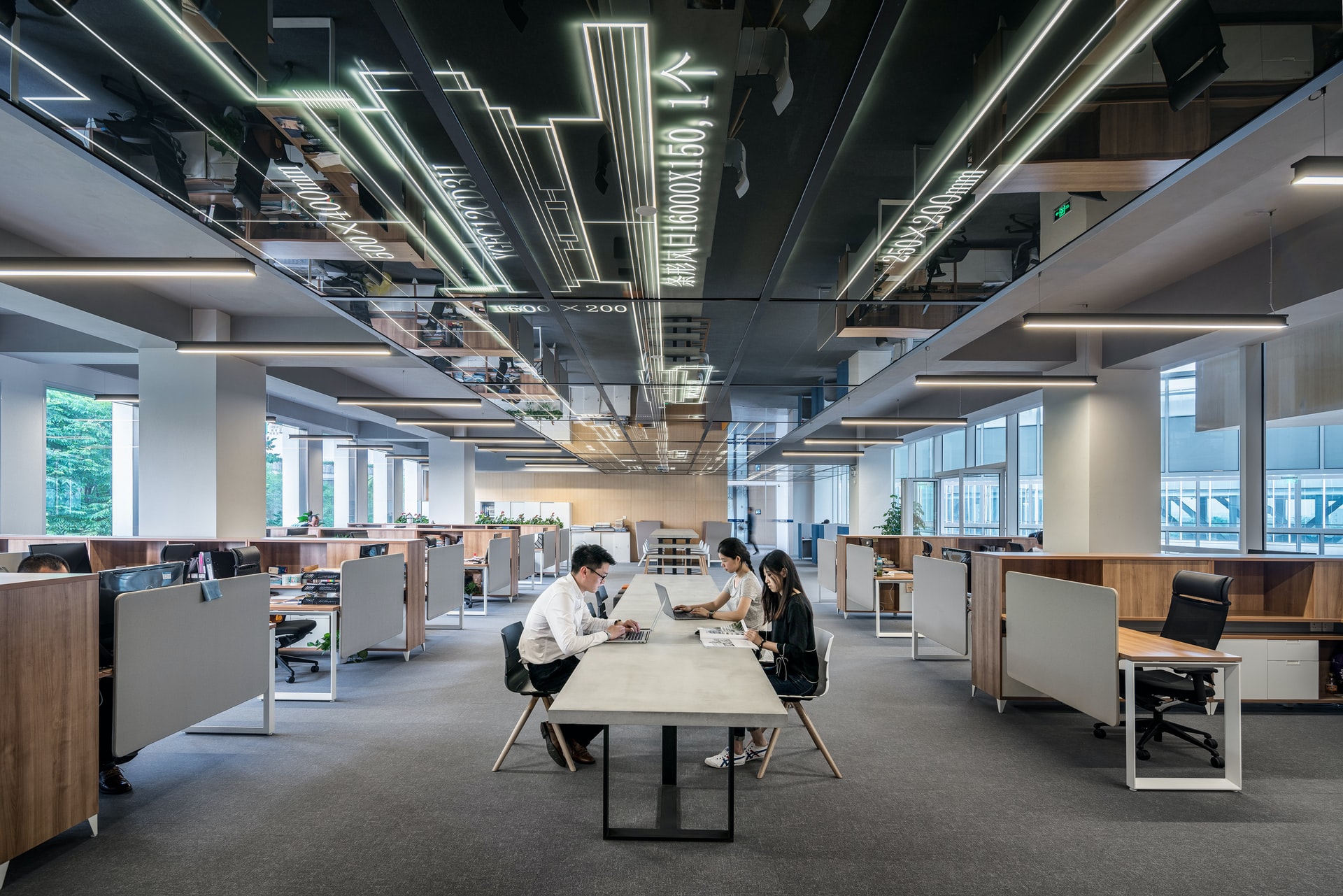I recently planned a vacation and was having a hard time trying to figure out how many days to book at the hotel. My main objective was to get away from screens and relax my body and mind because I was totally exhausted.
Like a lot of people, I’m a digital worker. But, unlike many people, I’ve been doing it a long time – more than ten years. And for all my efforts, it felt like I was losing at the balance game, which made me wonder if I was approaching the problem correctly.
Is it possible to balance work and life?
Like I said, trying to strike a balance between my work and personal life had been elusive – like trying to grab my right hand with my right fingers. I can sort of do it, but I knew that it wasn’t completely possible.
That’s because my life and work are integrated in many ways.
I love what I do. My chosen field (technology) is exciting and entertaining. The people in it are intelligent and fun. It feels like we’re on a trajectory heading towards an amazing future that is unknown yet scary at the same time. I truly don’t want to be anywhere else.
So for those reasons and more, I just can’t “turn off” my work life. Chances are, your presence on this site might mean that you feel the same way.
So what do we do to avoid burnout? As much as I enjoy my job, I can get overwhelmed with too much information. My head sometimes hurts, my eyes feel dry, and I get pains from sitting too much at the computer. There needs to be some ‘balance’ to offset these negative aspects of this lifestyle. So how do we do it?
Is work-life ‘balance’ really the goal?
Back to my vacation – did I really need to take ten days off in a row? Part of me suspected that this would strike a balance, but only because I went too far off in the wrong direction.
I then considered the analogy of a canoe. When it tips really far to one side, a drastic move in the other direction is required to bring it back to the center. In that sense, taking ten entire days off from work in succession would achieve balance – but that’s because things were terribly out of equilibrium in the first place.
So what did I do? I booked a few more days than initially planned and bought a one-way ticket to extend my trip if I needed more time. Rather than commit to ten days unplugged, I made the decision to take 2-3 days off at a time to relax, go to the beach, and do some hiking while working other days part-time.
Integration was the answer for me
Not everyone loves their job, but for those that do, work life integration may be a better idea. Rather than trying to separate our work and personal life, the solution might be to just accept that for some of us, work is part of life. Sometimes we look forward to it, sometimes we need some distance.
From that acceptance of the idea of work life integration, we can set boundaries to achieve a healthier life:
- Radiant health: a fit body, clear mind, and robust immune system
- A vibrant social life with friends, family and colleagues
- Exciting work that motivates us to learn and achieve more
- Enough money to live well, and take care of the future
- Time for extracurricular activities to enhance personal development
While everyone is different, many of us will share goals similar to the above. Some of these goals require unplugging from work completely, others intertwine with our jobs. Here are some tips that helped me escape the inescapable problem of achieving ‘balance’ and move towards work life integration instead:
1. Practice radical self-care
Many of us work from home and set our own schedules. That gives us the opportunity to take breaks to exercise, meditate, and eat well.
Some individuals stuck in an office paradigm where employee productivity is attendance-based may find this difficult to do. The key is to break free of that mentality and perhaps extend the work day a couple of hours to include more breaks away from the office to take care of yourself.
2. Understand that everyone is not you
Not everyone loves their job. Not everyone wants to talk about the latest news in your industry. For some people, a job is just a job – and some of those people may be members of your team.
There are several things you can do to build a healthy work life integration expectation for people on your team that include:
- Bringing in an expert and holding a workshop on techniques to integrate work and life in a healthy way
- If possible, organize workload by assignments instead of hours so they have some flexibility to integrate other activities into their work day
- Leading by example and sharing your experience with other members of your team
Everyone is different, so the solutions will be unique to your situation. Some people have a hustle mentality while others are more relaxed. Since each job is different, the right person will have the appropriate outlook suited for their role. The key is to make sure that everyone has the tools to integrate their work effectively so they can stay healthy and productive.
3. Create boundaries where needed
Some experts advocate the idea of work-life blending – and while it has some merit, it may not work for everyone.
The difference is somewhat analogous to a green smoothie vs. a salad. Smoothies may be easy to drink and good for our health, but the separated nature of salad ingredients might make them a better – and more interesting – choice for some people.
There really isn’t a wrong or right choice here. Some aspects of your work and personal life may be more suited to blending while others need to be separated. For example, if you want to take up photography, will you spend time taking pictures of computers, routers, and gadgets? Do you want all your friends to be people from work? Are all your books about your industry? Do you willingly buy a lot of clothes from your favorite search tool?
Answering these kinds of questions can help us discover what type of work life integration is best for us. Besides, as interesting as pictures of computers may be, there’s a big world out there waiting to be discovered.
The key to work life integration is to find what works for you
For all its perks, remote work presents many challenges to staying healthy on a mental, physical, and spiritual level. An important goal is to find ways to integrate your work and personal life, so one compliments the other for benefits that include workplace satisfaction, happier relationships, and less stress.
Dr. Heidi Hanna, Chief Energy Officer of Synergy Brain Fitness, takes the idea of work life integration further with tips on recovering from stress and adapting workflows to suit our natural energy rhythm. To learn more, listen to her interview on The Digital Workplace Podcast.
Photo by Julien Lanoy on Unsplash
I recently planned a vacation and was having a hard time trying to figure out how many days to book at the hotel. My main objective was to get away from screens and relax my body and mind because I was totally exhausted.
Like a lot of people, I’m a digital worker. But, unlike many people, I’ve been doing it a long time – more than ten years. And for all my efforts, it felt like I was losing at the balance game, which made me wonder if I was approaching the problem correctly.
Is it possible to balance work and life?
Like I said, trying to strike a balance between my work and personal life had been elusive – like trying to grab my right hand with my right fingers. I can sort of do it, but I knew that it wasn’t completely possible.
That’s because my life and work are integrated in many ways.
I love what I do. My chosen field (technology) is exciting and entertaining. The people in it are intelligent and fun. It feels like we’re on a trajectory heading towards an amazing future that is unknown yet scary at the same time. I truly don’t want to be anywhere else.
So for those reasons and more, I just can’t “turn off” my work life. Chances are, your presence on this site might mean that you feel the same way.
So what do we do to avoid burnout? As much as I enjoy my job, I can get overwhelmed with too much information. My head sometimes hurts, my eyes feel dry, and I get pains from sitting too much at the computer. There needs to be some ‘balance’ to offset these negative aspects of this lifestyle. So how do we do it?
Is work-life ‘balance’ really the goal?
Back to my vacation – did I really need to take ten days off in a row? Part of me suspected that this would strike a balance, but only because I went too far off in the wrong direction.
I then considered the analogy of a canoe. When it tips really far to one side, a drastic move in the other direction is required to bring it back to the center. In that sense, taking ten entire days off from work in succession would achieve balance – but that’s because things were terribly out of equilibrium in the first place.
So what did I do? I booked a few more days than initially planned and bought a one-way ticket to extend my trip if I needed more time. Rather than commit to ten days unplugged, I made the decision to take 2-3 days off at a time to relax, go to the beach, and do some hiking while working other days part-time.
Integration was the answer for me
Not everyone loves their job, but for those that do, work life integration may be a better idea. Rather than trying to separate our work and personal life, the solution might be to just accept that for some of us, work is part of life. Sometimes we look forward to it, sometimes we need some distance.
From that acceptance of the idea of work life integration, we can set boundaries to achieve a healthier life:
- Radiant health: a fit body, clear mind, and robust immune system
- A vibrant social life with friends, family and colleagues
- Exciting work that motivates us to learn and achieve more
- Enough money to live well, and take care of the future
- Time for extracurricular activities to enhance personal development
While everyone is different, many of us will share goals similar to the above. Some of these goals require unplugging from work completely, others intertwine with our jobs. Here are some tips that helped me escape the inescapable problem of achieving ‘balance’ and move towards work life integration instead:
1. Practice radical self-care
Many of us work from home and set our own schedules. That gives us the opportunity to take breaks to exercise, meditate, and eat well.
Some individuals stuck in an office paradigm where employee productivity is attendance-based may find this difficult to do. The key is to break free of that mentality and perhaps extend the work day a couple of hours to include more breaks away from the office to take care of yourself.
2. Understand that everyone is not you
Not everyone loves their job. Not everyone wants to talk about the latest news in your industry. For some people, a job is just a job – and some of those people may be members of your team.
There are several things you can do to build a healthy work life integration expectation for people on your team that include:
- Bringing in an expert and holding a workshop on techniques to integrate work and life in a healthy way
- If possible, organize workload by assignments instead of hours so they have some flexibility to integrate other activities into their work day
- Leading by example and sharing your experience with other members of your team
Everyone is different, so the solutions will be unique to your situation. Some people have a hustle mentality while others are more relaxed. Since each job is different, the right person will have the appropriate outlook suited for their role. The key is to make sure that everyone has the tools to integrate their work effectively so they can stay healthy and productive.
3. Create boundaries where needed
Some experts advocate the idea of work-life blending – and while it has some merit, it may not work for everyone.
The difference is somewhat analogous to a green smoothie vs. a salad. Smoothies may be easy to drink and good for our health, but the separated nature of salad ingredients might make them a better – and more interesting – choice for some people.
There really isn’t a wrong or right choice here. Some aspects of your work and personal life may be more suited to blending while others need to be separated. For example, if you want to take up photography, will you spend time taking pictures of computers, routers, and gadgets? Do you want all your friends to be people from work? Are all your books about your industry? Do you willingly buy a lot of clothes from your favorite search tool?
Answering these kinds of questions can help us discover what type of work life integration is best for us. Besides, as interesting as pictures of computers may be, there’s a big world out there waiting to be discovered.
The key to work life integration is to find what works for you
For all its perks, remote work presents many challenges to staying healthy on a mental, physical, and spiritual level. An important goal is to find ways to integrate your work and personal life, so one compliments the other for benefits that include workplace satisfaction, happier relationships, and less stress.
Dr. Heidi Hanna, Chief Energy Officer of Synergy Brain Fitness, takes the idea of work life integration further with tips on recovering from stress and adapting workflows to suit our natural energy rhythm. To learn more, listen to her interview on The Digital Workplace Podcast.
Photo by Julien Lanoy on Unsplash
)
)
)







